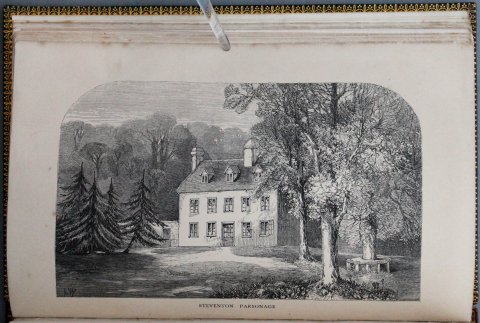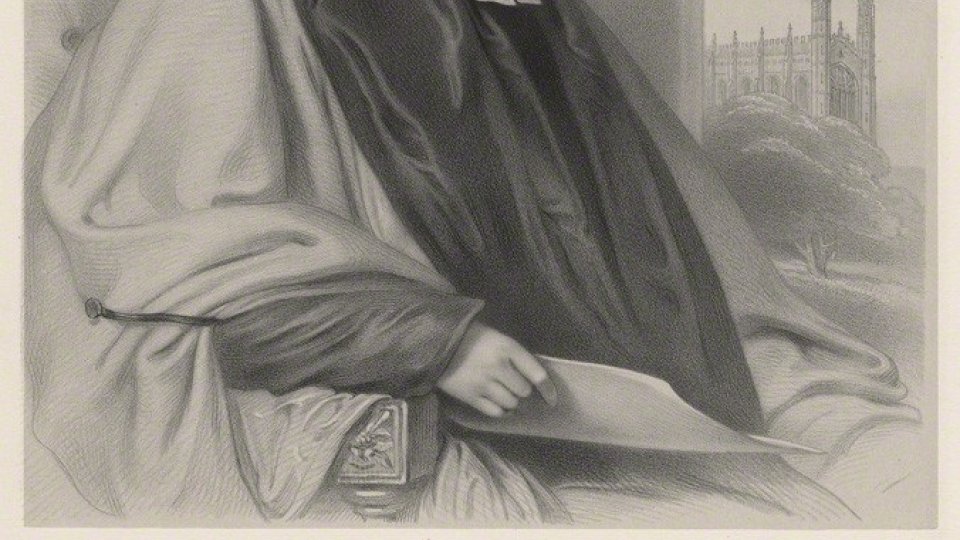
In the summer of 2017 King's College Library marked the bicentenary of the death of the novelist Jane Austen, one of Britain's most loved novelists, with a series of exhibitions and a public lecture, showcasing its rich holdings of first and early editions of all of Austen's novels as well as the autograph manuscript of her last (unfinished) novel Sanditon which was given to King's Library in 1930.
Jane Austen was born on 16 December 1775 in Steventon parsonage in Hampshire, where her father served as rector of the parishes of Steventon and nearby Deane, and she lived the first 25 years of her life there. She drafted early versions of her novels Sense and Sensibility, Pride and Prejudice and Northanger Abbey whilst living in Steventon. It was the most stable and probably happiest period of her life, so, understandably, she was so distraught when she was told in December 1800 that her father planned to retire and move the family to Bath that she fainted. Perhaps, an indication of her state of mind is her lack of productivity as a writer during the time she lived at Bath.
Sense and Sensibility
Sense and Sensibility, Austen's first novel to be published, was written in epistolary form around 1795 under the title Elinor and Marianne in Steventon. It was begun in its present form in autumn 1797 and revised and prepared for publication in 1809-1811 when Jane was living in Chawton. Below is a selection of images from the first and second editions and an early French translation. The novel was published anonymously, although as the title page makes clear it was written 'by a Lady'. The first edition sold 750 printed copies by July 1813. A second, revised edition was advertised in October 1813. In 1815 the novel was translated freely (according to the title page) by the prolific Swiss novelist and translator Isabelle de Montolieu (1751–1832) as Raison et Sensibilité ou les Deux Manières d'aimer.
Pride and Prejudice
Pride and Prejudice, originally titled First Impressions, was offered for publication to the London bookseller Thomas Cadell, but the offer was declined by return post. The novel was subsequently published by Thomas Egerton under the revised title Pride and Prejudice. Upon receiving her copy of the first edition from the publisher, Jane wrote: ‘I have got my darling child from London’ (27 Jan 1813). The first edition was met with favourable reviews and sold out, with a second edition published in November that year. A third edition was published in 1817. For further information and images please see our special collections blog.
Mansfield Park
In 1809 Austen's brother Edward offered his mother and sisters a more settled life: the use of a large cottage in Chawton, near Alton in Hampshire. Whilst living in Chawton Jane published her first four novels. One of these was Mansfield Park which she wrote between 1811 and 1813. Mansfield Park is Austen's third published novel. It was first printed by Egerton in 1814 and was so popular it sold out in six months. A second edition was published in 1816 by John Murray, still within Austen's lifetime, which also sold out. Austen's income from Mansfield Park was greater than any of her novels published during her lifetime. In an anonymous review of Emma in 1815, Sir Walter Scott completely fails to mention Mansfield Park. In a letter to her publisher John Murray, Austen remarks with regret that "so clever a man as the reviewer of Emma, should consider it as unworthy of being noticed". The novel first received critical attention in 1821.
Emma
Written after the publication of Pride and Prejudice, Emma was published at Austen's own expense, by the London publisher John Murray, which enabled her to retain the copyright. Two thousand copies of the novel were printed and she paid a 10% commission to Murray. The publication in December 1815 (dated 1816) consisted of a three-volume set at the selling price of £1.1s per set. Austen had been invited to dedicate a novel to the Prince Regent (later George IV) and Emma was the chosen work. She disapproved of the Prince’s treatment of his wife, but felt she couldn’t refuse, so she settled for a title page reading simply ‘Emma, Dedicated by Permission to HRH The Prince Regent’. But her publisher (John Murray) thought it ought to be more elaborate. Austen was seemingly unaware that Emma was published in America in the same year, and only four copies of this American first edition survives.
Northanger Abbey and Persuasion
Austen’s novels Persuasion (written 1815-16) and Northanger Abbey (written 1798-99) both appeared posthumously in a four-volume set in December 1817, although the title page states 1818. They are prefaced by a ‘biographical notice’ written by Austen's brother Henry Austen in which her identity is revealed for the first time. Austen appears to have intended to publish Persuasion in 1818 but did not live long enough to do so. Persuasion was first printed in French in 1821. Below are images from the copy of the second French edition (1828), freely translated by the Swiss novelist and translator Isabelle de Montolieu (1751–1832), which belonged to Sir Geoffrey Keynes, the younger brother of John Maynard Keynes.
